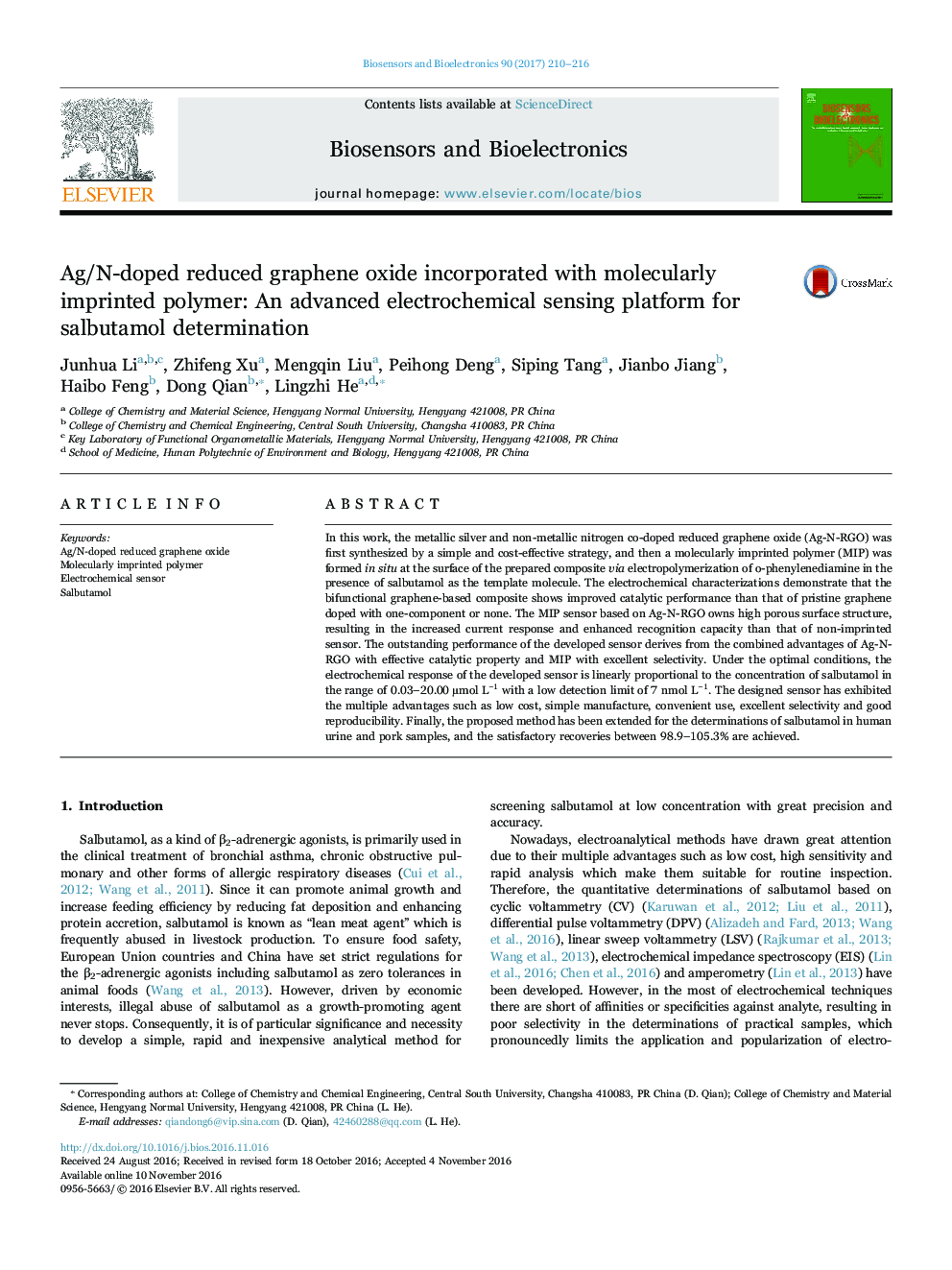| Article ID | Journal | Published Year | Pages | File Type |
|---|---|---|---|---|
| 5031249 | Biosensors and Bioelectronics | 2017 | 7 Pages |
Abstract
In this work, the metallic silver and non-metallic nitrogen co-doped reduced graphene oxide (Ag-N-RGO) was first synthesized by a simple and cost-effective strategy, and then a molecularly imprinted polymer (MIP) was formed in situ at the surface of the prepared composite via electropolymerization of o-phenylenediamine in the presence of salbutamol as the template molecule. The electrochemical characterizations demonstrate that the bifunctional graphene-based composite shows improved catalytic performance than that of pristine graphene doped with one-component or none. The MIP sensor based on Ag-N-RGO owns high porous surface structure, resulting in the increased current response and enhanced recognition capacity than that of non-imprinted sensor. The outstanding performance of the developed sensor derives from the combined advantages of Ag-N-RGO with effective catalytic property and MIP with excellent selectivity. Under the optimal conditions, the electrochemical response of the developed sensor is linearly proportional to the concentration of salbutamol in the range of 0.03-20.00 µmol Lâ1 with a low detection limit of 7 nmol Lâ1. The designed sensor has exhibited the multiple advantages such as low cost, simple manufacture, convenient use, excellent selectivity and good reproducibility. Finally, the proposed method has been extended for the determinations of salbutamol in human urine and pork samples, and the satisfactory recoveries between 98.9-105.3% are achieved.
Related Topics
Physical Sciences and Engineering
Chemistry
Analytical Chemistry
Authors
Junhua Li, Zhifeng Xu, Mengqin Liu, Peihong Deng, Siping Tang, Jianbo Jiang, Haibo Feng, Dong Qian, Lingzhi He,
